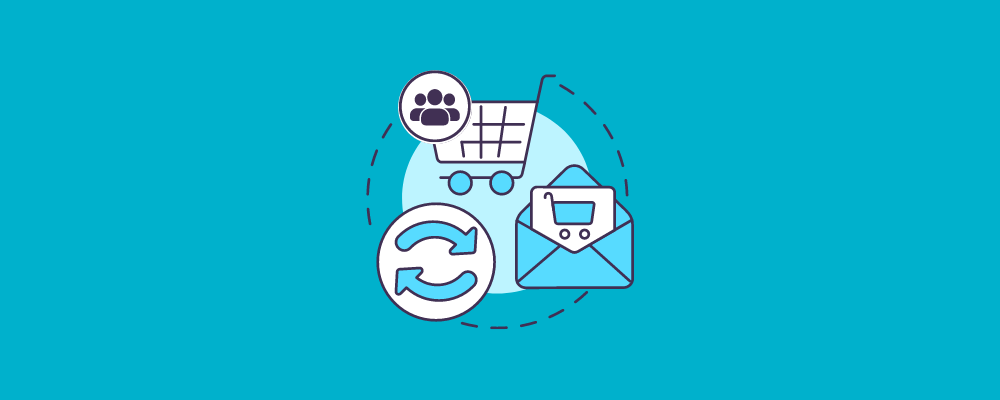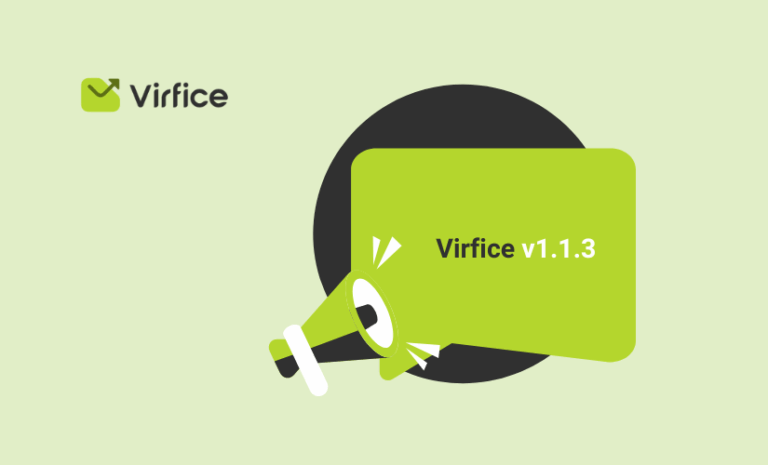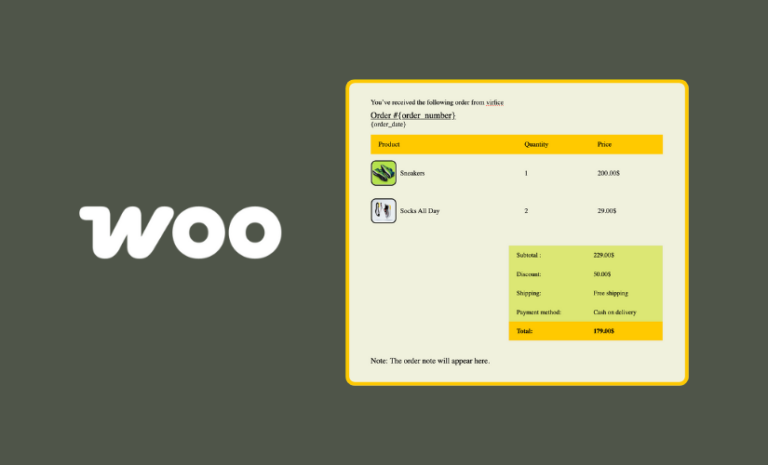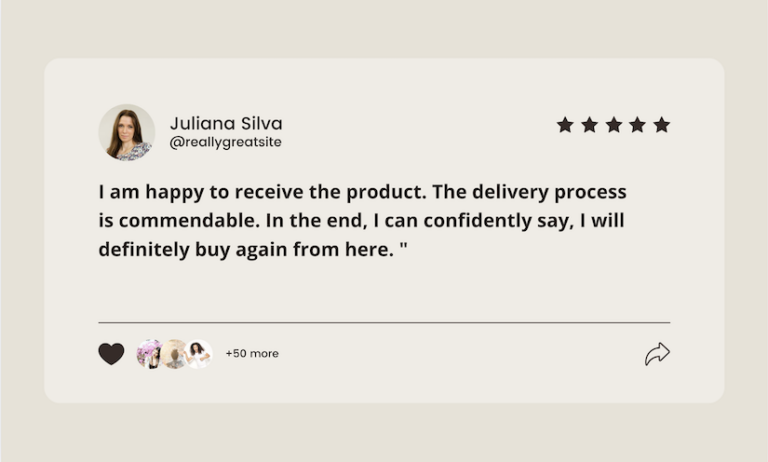Want to learn how to boost conversions with lifecycle emails for eCommerce stores? This complete guide covers types, benefits, and practical tips for implementing effective email strategies tailored to each stage of the customer journey.
Email marketing strategies for eCommerce stores are different from those for any regular business. One of the most effective strategies within email marketing is the use of lifecycle emails. These emails are specially crafted to match the different stages of a customer’s journey, from their first interaction with your store to the follow-up after they make a purchase.
We will delve into the various types of lifecycle emails, discuss their benefits, and provide practical tips on how to set them up. Whether you’re new to email marketing or looking to refine your existing strategy, this guide will offer valuable insights to help you make the most of lifecycle emails in your eCommerce store.
What are Lifecycle Emails?
Lifecycle emails are automated messages sent to customers based on their behavior and interactions with your eCommerce store. These emails are designed to nurture the relationship between your brand and the customer, guiding them through the buying process and encouraging repeat purchases.

From welcoming new subscribers to re-engaging inactive customers, lifecycle emails cover a wide range of customer interactions. Each type of email serves a specific purpose and is designed to enhance the customer’s experience with your brand. By understanding and utilizing these different types of emails, you can ensure that your communication is relevant, timely, and impactful.
Benefits of Lifecycle Emails for eCommerce Stores
Traditional marketing methods often fall short in creating personalized and meaningful interactions with customers. This is where lifecycle emails come into play. By automating targeted communication based on customer behavior and engagement, lifecycle emails provide a strategic advantage that can transform how you interact with your audience. Before diving into the specific benefits, let’s understand why lifecycle emails are a game-changer for eCommerce stores.
Lifecycle emails are a series of automated emails sent to customers at different stages of their journey with your brand. From the moment a potential customer signs up for your newsletter to post-purchase follow-ups, these emails are tailored to meet their specific needs and preferences. This targeted approach not only enhances the customer experience but also drives higher engagement and conversions. Now, let’s explore the key benefits of incorporating lifecycle emails into your eCommerce strategy.
- Personalization: Lifecycle emails allow you to send highly targeted and relevant messages to your customers, increasing the likelihood of engagement.
- Automation: Once set up, lifecycle email sequences run automatically, saving you time and ensuring timely communication.
- Increased Conversion Rates: By delivering the right message at the right time, lifecycle emails can significantly boost your conversion rates.
- Customer Retention: These emails help in building a long-term relationship with your customers, encouraging loyalty and repeat business.
Types of Lifecycle Emails for eCommerce Stores
Effective communication is crucial for nurturing customer relationships and driving sales. Lifecycle emails are an essential component of this strategy, designed to engage customers at every stage of their journey with your brand. From welcoming new subscribers to re-engaging inactive customers, these automated emails help create personalized experiences that foster loyalty and boost conversions. Before we delve into the specific types of lifecycle emails, it’s important to understand the overall significance of this approach.
Lifecycle emails are not just a series of random messages; they are carefully crafted communications that correspond to key milestones in the customer lifecycle. By addressing the unique needs and behaviors of customers at each stage, you can deliver relevant content that enhances their experience and encourages them to take desired actions. Let’s explore the various types of lifecycle emails that can elevate your eCommerce marketing strategy.
Welcome Emails
Welcome emails are the initial communications sent to new subscribers or customers when they first engage with your brand. These emails are crucial for creating a positive first impression and setting the tone for your future relationship with the customer. A well-crafted welcome email can help to build trust, introduce your brand’s values, and encourage new subscribers to take the next step, whether that’s making a purchase, exploring your products, or engaging with your content.
- Purpose: Introduce your brand and set the tone for future communications.
- Content: Welcome message, brand story, discount code for first purchase, and links to popular products or categories.
Onboarding Emails
Onboarding emails guide new customers through their initial interactions with your store. These emails help to reduce any friction or confusion and ensure that customers know how to navigate your site and make the most of their purchases.
- Purpose: Guide new customers through their initial interactions with your store.
- Content: Instructions on account setup, how to use products and tips for getting the most out of their purchase.
Abandoned Cart Emails
Abandoned cart emails are sent to customers who have added items to their shopping cart but did not complete the purchase. These emails serve as a gentle reminder to encourage customers to return and complete their transactions.
- Purpose: Recover lost sales by reminding customers of items left in their carts.
- Content: Reminder of the abandoned items, images, descriptions, a special discount code, and urgency-inducing language.
Post-Purchase Emails
Post-purchase emails are crucial for reinforcing the customer’s decision to buy from you. They help to build trust and encourage future purchases by providing order details, expressing gratitude, and suggesting additional products.
- Purpose: Reinforce the customer’s purchase decision and encourage future purchases.
- Content: Order confirmation, shipping details, thank-you messages, product usage tips, and related product recommendations.
Re-engagement Emails
Over time, some customers may become inactive. Re-engagement emails aim to rekindle their interest in your store and bring them back. These emails can remind customers of the value your store offers and encourage them to reconnect.
- Purpose: Reconnect with inactive customers and bring them back to your store.
- Content: Special offers, new product announcements, and a personal message expressing how much you miss their business.
Win-back Emails
Win-back emails are designed to re-engage customers who have not interacted with your brand for an extended period. These emails aim to reignite the interest of lapsed customers and encourage them to return to your store. By addressing the reasons why they may have stopped engaging and offering enticing incentives, win-back emails can effectively bring back lost customers and rekindle their loyalty.
- Purpose: Reactivate lapsed customers and entice them to return.
- Content: Exclusive discounts, loyalty program invitations, and a reminder of past purchases.
Feedback Request Emails
Gathering feedback is essential for improving your products and services. Feedback request emails invite customers to share their opinions and experiences, providing valuable insights for your business. The best practices include offering discounts and store credit to inspire product reviews in emails.
You can automate product review emails for your store. Check this guideline if you want to automate product review emails for WooCommerce stores.
- Purpose: Gather customer feedback to improve products and services.
- Content: Request for product reviews, survey links, and incentives for providing feedback.
Birthday Wishes Emails
Celebrating your customers’ birthdays with a personalized email can build a stronger connection and make them feel special. You can include birthday greetings and exclusive offers in such emails.
- Purpose: Build a personal connection with your customers by celebrating their special day.
- Content: Personalized birthday greetings, exclusive birthday discounts, and special offers.
Customer Anniversary Emails
Celebrating the anniversary of a customer’s first purchase or registration shows appreciation and encourages continued loyalty. These emails acknowledge the customer’s time with your brand and offer special incentives to keep them engaged.
- Purpose: Celebrate the anniversary of the customer’s first purchase or registration.
- Content: Thank-you message, special anniversary discount, and personalized product recommendations.
Seasonal and Holiday Emails
Seasonal and holiday emails take advantage of timely opportunities to drive sales. These emails often feature festive themes and special promotions tailored to the specific season or holiday. If you are looking for compelling subject lines for seasonal and holiday emails, check our 150+ holiday email subject lines for eCommerce stores.
- Purpose: Capitalize on seasonal trends and holiday shopping.
- Content: Holiday greetings, seasonal product promotions, and time-sensitive offers.
Refer-a-Friend Emails
Encourage your existing customers to refer friends to your store with refer-a-friend emails, boosting your customer base organically. These emails highlight the benefits of referring friends and provide easy ways to share referral links.
- Purpose: Encourage customers to refer friends to your store.
- Content: Referral program details, incentives for both the referrer and the friend, and easy sharing options.
Customer Reaching a Certain Purchase Amount Emails
Recognize and reward customers when they reach a significant spending milestone, encouraging further engagement and loyalty. These emails acknowledge the customer’s achievements and offer special rewards or discounts.
- Purpose: Recognize and reward customers when they reach a specific spending milestone.
- Content: Congratulatory message, special discount or reward, and a summary of their achievements.
Customer Reaching a Certain Number of Purchases Emails
Celebrate customers when they reach a specific number of purchases, reinforcing their loyalty and encouraging continued patronage. These emails highlight the customer’s commitment to your brand and offer incentives to keep shopping.
- Purpose: Celebrate customers when they reach a specific number of purchases.
- Content: Thank-you messages, loyalty rewards, and personalized product recommendations.
Best Practices for Lifecycle Emails for eCommerce Stores
Implementing lifecycle emails in your eCommerce strategy can significantly enhance customer engagement and drive sales. However, to truly reap the benefits, it’s essential to follow best practices that ensure your emails are effective and well-received. These best practices will help you create compelling, targeted, and efficient email campaigns that resonate with your audience and achieve your business goals. Before diving into the best practices, let’s understand why attention to detail in your email strategy is crucial.
Lifecycle emails are more than just automated messages; they are a vital part of your customer communication strategy. Each email you send represents an opportunity to build a stronger relationship with your customers, encourage repeat business, and boost your brand’s reputation. By adhering to best practices, you can maximize the impact of your lifecycle emails, ensuring they are timely, relevant, and valuable to your recipients. Here are some key best practices to follow when creating lifecycle emails for your eCommerce store.
- Segment Your Audience: Group your customers based on behavior, purchase history, and engagement level to send more targeted emails.
- Personalize Your Messages: Use the customer’s name, tailor the content based on their preferences, and recommend products they are likely to be interested in.
- Optimize for Mobile: Ensure your emails are mobile-friendly, as a significant portion of your audience will open emails on their smartphones.
- Test and Optimize: Continuously test different elements of your emails (subject lines, content, CTAs) to see what resonates best with your audience.
- Measure Performance: Track key metrics like open rates, click-through rates, and conversion rates to evaluate the success of your email campaigns and make data-driven improvements.
How to Implement Lifecycle Emails for eCommerce Stores
Setting up lifecycle emails for eCommerce stores involves more than just creating a series of messages. It requires a thorough understanding of your customer journey, the ability to segment your audience, and the use of automation tools to deliver the right message at the right time. A well-implemented lifecycle email strategy can help you nurture leads, reduce cart abandonment, and increase customer loyalty. Here are the steps to effectively implement lifecycle emails for your eCommerce store.
- Choose the Right Email Marketing Tool: Select a tool that offers robust automation features, segmentation capabilities, and detailed analytics.
- Set Up Automation Workflows: Define triggers for each type of lifecycle email, such as a new sign-up, an abandoned cart, or a completed purchase.
- Create Engaging Content: Craft compelling subject lines, use high-quality images, and write clear and persuasive copy.
- Monitor and Refine: Regularly review your email performance, gather feedback, and make adjustments to improve your campaigns continually.
Conclusion
Lifecycle emails for eCommerce stores help you to build lasting relationships with your customers, increase conversions, and drive repeat business. By understanding the different types of lifecycle emails and following best practices, you can create an effective email marketing strategy that keeps your customers engaged and coming back for more.
Implementing lifecycle emails for eCommerce stores may take some time and effort initially, but the long-term benefits make it a worthwhile investment for any eCommerce store. Start today and watch your customer relationships and sales soar. With lifecycle emails in your eCommerce email marketing strategy, you can ensure that your customers receive the right message at the right time, leading to higher engagement, satisfaction, and loyalty.



